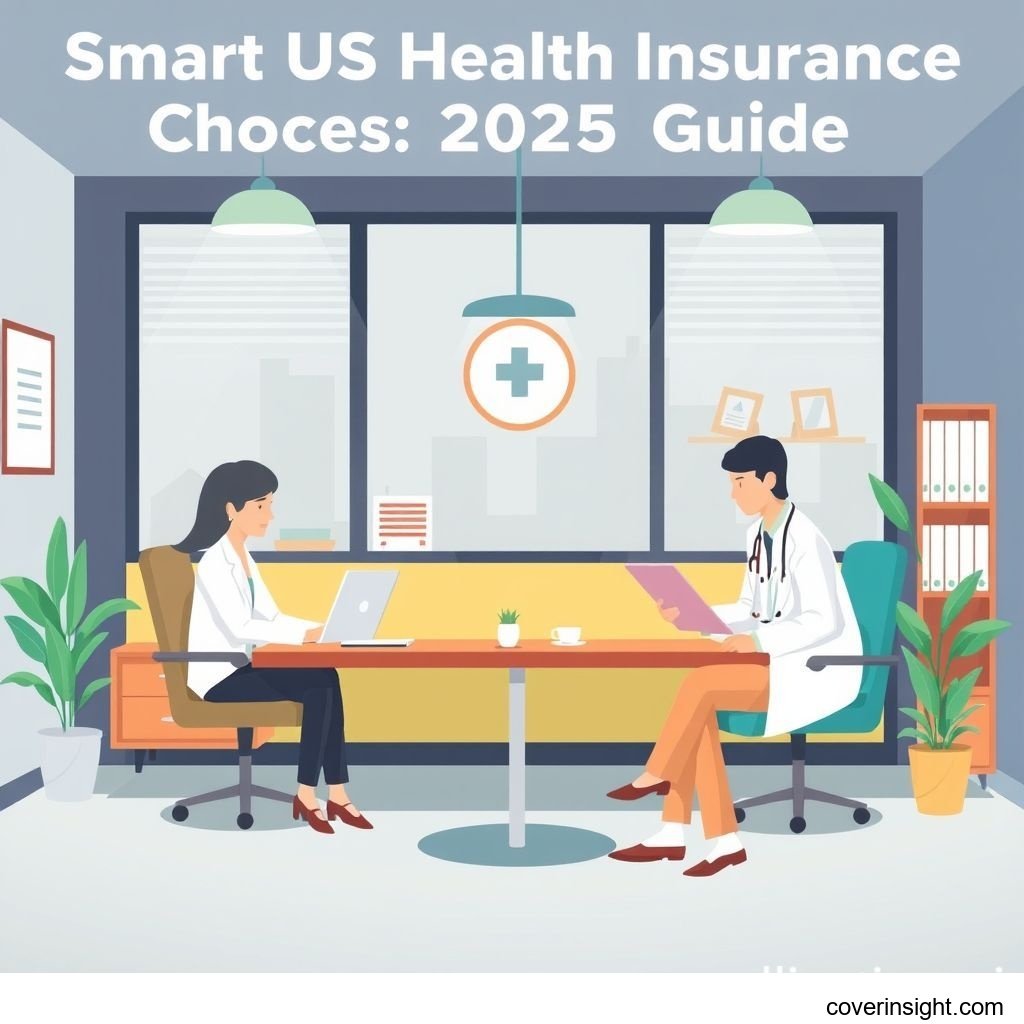Introduction
As we look ahead to 2025, navigating the complex landscape of medical insurance in the US remains a crucial task for individuals and families alike. Health coverage isn't just a legal requirement for many; it's a vital safety net, protecting you from potentially catastrophic medical bills. With healthcare costs continuing to rise, having the right plan in place can mean the difference between financial stability and a mountain of debt if an unexpected illness or injury strikes. Understanding your options, deciphering the jargon, and making an informed decision about your health insurance are more important than ever.
Coverage Details
Choosing the best health insurance involves understanding what you're actually getting. It’s not just about the monthly premium; it’s about what the plan covers and what it leaves out.
What’s Included
Most comprehensive health insurance plans in the US are designed to cover a wide range of essential health benefits, as mandated by the Affordable Care Act (ACA). These typically include:
-
Ambulatory patient services: Outpatient care you receive without being admitted to a hospital.
-
Emergency services: Care for conditions that could be life-threatening if not immediately treated.
-
Hospitalization: Inpatient care for surgery, acute conditions, or childbirth.
-
Maternity and newborn care: Care before and after your baby is born.
-
Mental health and substance use disorder services: Including behavioral health treatment.
-
Prescription drugs: Medications prescribed by a doctor.
-
Rehabilitative and habilitative services and devices: Helping people recover from or live with injuries, disabilities, or chronic conditions.
-
Laboratory services: Tests to diagnose or monitor health conditions.
-
Preventive and wellness services and chronic disease management: Screenings, vaccinations, and ongoing care for conditions like diabetes or high blood pressure.
-
Pediatric services: Including oral and vision care for children.
For those looking for a broader understanding of global insurance frameworks, exploring general [Insurance Resources Global] can provide valuable context.
Common Exclusions
While plans are comprehensive, it's just as important to know what might not be covered, or what might require specific riders or conditions:
-
Cosmetic surgery: Unless medically necessary, like reconstructive surgery after an accident.
-
Off-label drug use: Sometimes, medications prescribed for conditions other than their approved use might not be covered.
-
Experimental treatments: Unproven or investigational procedures.
-
Weight loss programs or bariatric surgery: Unless deemed medically necessary under specific criteria.
-
Long-term care: Services like nursing home care or assisted living are typically separate policies.
-
Certain dental and vision services for adults: While pediatric dental and vision are essential benefits, adult coverage is often separate or limited.
Always pore over the details of any policy you're considering to avoid surprises down the line. It's about "dotting your i's and crossing your t's."
Cost Analysis
The cost of health insurance can feel like a moving target, influenced by a myriad of factors. Understanding these can help you better budget and find a plan that won't break the bank.
Price Factors
Several elements weigh heavily on the price of your medical insurance premium:
-
Age: Generally, premiums increase as you get older.
-
Location: Where you live in the US significantly impacts costs, largely due to variations in local healthcare costs and the number of insurers competing in the area. For instance, according to a 2023 report from the Kaiser Family Foundation, average benchmark premiums for a 40-year-old non-smoker on Healthcare.gov could vary by hundreds of dollars across different states.
-
Tobacco Use: Smokers often face significantly higher premiums.
-
Plan Category (Metal Tier): Plans are categorized as Bronze, Silver, Gold, or Platinum, reflecting the percentage of costs the plan pays on average. Bronze plans have the lowest premiums but highest out-of-pocket costs, while Platinum plans are the inverse.
-
Household Size: Covering more people means a higher premium.
-
Type of Plan: HMOs (Health Maintenance Organizations) typically have lower premiums than PPOs (Preferred Provider Organizations) because they offer less flexibility in choosing providers.
Saving Tips
Even with rising costs, there are ways to keep your insurance affordable:
-
Shop Around: Don't just stick with your current plan. Each year, compare options on platforms like [Healthcare.gov] or your state's marketplace. You might be surprised by what's available.
-
Consider Subsidies: Many Americans qualify for premium tax credits and cost-sharing reductions based on income, which can significantly lower your monthly payments and out-of-pocket expenses. In 2023, 9 out of 10 people who enrolled in a plan on Healthcare.gov or a state marketplace received financial help.
-
Choose the Right Metal Tier: A Bronze plan might be ideal if you're relatively healthy and primarily want protection against catastrophic events, while a Gold plan might suit someone who expects to use healthcare services frequently.
-
Utilize HSAs/FSAs: If you have a high-deductible health plan (HDHP), an HSA (Health Savings Account) can offer a tax-advantaged way to save for medical expenses. FSAs (Flexible Spending Accounts) are also an option if your employer offers one.
-
Stay In-Network: Using providers and facilities within your plan's network can save you a bundle. An out-of-network visit can really empty your pockets.
-
Explore Employer-Sponsored Plans: If available, these are often the most cost-effective option as employers typically cover a significant portion of the premium.
-
Check State Resources: Your [State Insurance Departments] can offer local insights and resources for finding affordable coverage. For more detailed state-specific information, you can always visit your [US Insurance Home].
FAQs
How much does medical insurance cost?
The cost varies wildly. Premiums can range from under $100 per month for individuals with subsidies to over $1,000 for families without assistance, depending on age, location, and plan choice. Deductibles can range from a few hundred dollars to several thousand.
What affects premiums?
As mentioned, age, location, tobacco use, household size, and the type of plan (HMO, PPO, EPO, POS) and its "metal tier" (Bronze, Silver, Gold, Platinum) are the primary factors. Some states might also allow insurers to consider community rating or other factors within limits.
Is it mandatory?
While there's no longer a federal penalty for not having health insurance, some states still have individual mandates. Even without a mandate, foregoing coverage means you're on the hook for 100% of your medical bills, which can easily run into thousands or even hundreds of thousands of dollars for serious conditions. It's often "penny wise and pound foolish" to skip coverage.
How to choose?
Consider your healthcare needs, budget, and risk tolerance. If you anticipate frequent doctor visits or managing a chronic condition, a plan with a higher premium but lower out-of-pocket costs (like Gold or Platinum) might be a better fit. If you're healthy and primarily want protection against major medical events, a Bronze or high-deductible Silver plan could work. Always compare the total estimated annual cost, including premiums, deductibles, co-pays, and out-of-pocket maximums. Checking reviews and ratings from reputable sources like the [National Association of Insurance Commissioners] can also be helpful.
Consequences of no coverage?
The consequences can be severe. Without health insurance, you're solely responsible for all medical bills. A single emergency room visit can cost thousands, and major illnesses or surgeries can result in medical debt spiraling into the tens or hundreds of thousands of dollars, potentially leading to bankruptcy. Furthermore, without insurance, accessing routine or preventative care becomes difficult, meaning treatable conditions might worsen before being addressed. A real-world example: A young, healthy college student in Oregon, believing he was invincible, opted out of coverage. A sudden appendicitis attack landed him in the ER, followed by surgery. The resulting bill, without insurance, was over $30,000, forcing his family to take out a loan and him to work multiple jobs to pay it down for years. It's a stark reminder that even seemingly healthy individuals aren't immune to unexpected medical crises.
Author Insight & Experience
As someone living in the US who has navigated the health insurance market both individually and through employers, I can attest to the sheer volume of information and the complexity involved. It often feels like you need a degree in healthcare economics just to pick a plan! My best advice, based on years of observing this market, is to not let the jargon overwhelm you. Focus on the core numbers: premium, deductible, out-of-pocket maximum, and co-pays for services you use frequently. And critically, understand if your preferred doctors are in-network before you commit. Sometimes, the "best" plan isn't the one with the flashiest benefits, but the one that truly fits your personal or family's health needs and financial situation without leaving you in a lurch when you need care most.








Comments